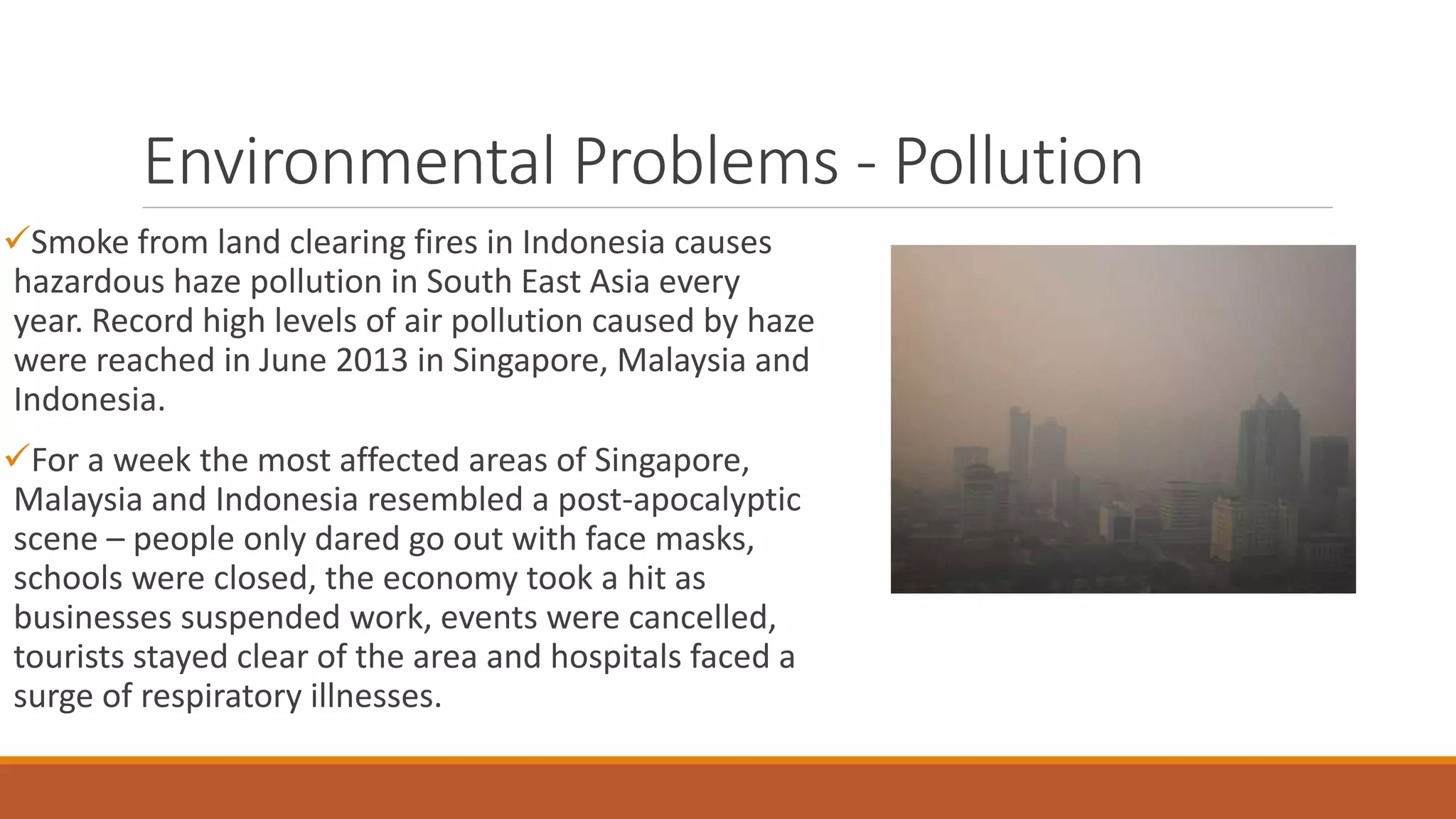The natural environment chapter discusses the natural environment of various regions including Southeast Asia, East Asia, Europe, and North America. It defines the natural environment and discusses components like climate, vegetation, wildlife, and natural hazards specific to each region. Some key environmental problems discussed are natural disasters like tsunamis, diseases prevalent in different areas, and types of pollution including thermal and haze pollution. It also provides details on climate types such as tropical, equatorial, oceanic, continental, and Mediterranean climates.


















